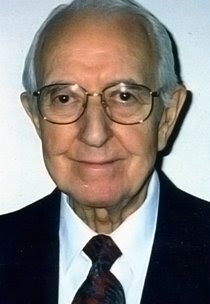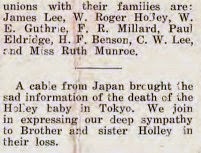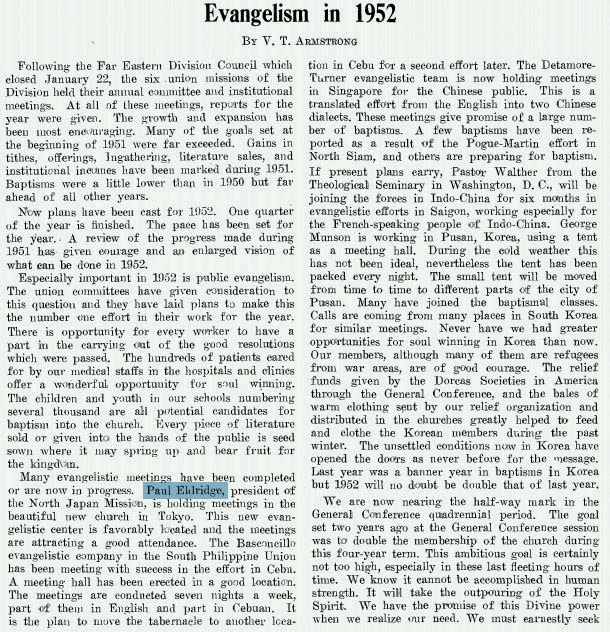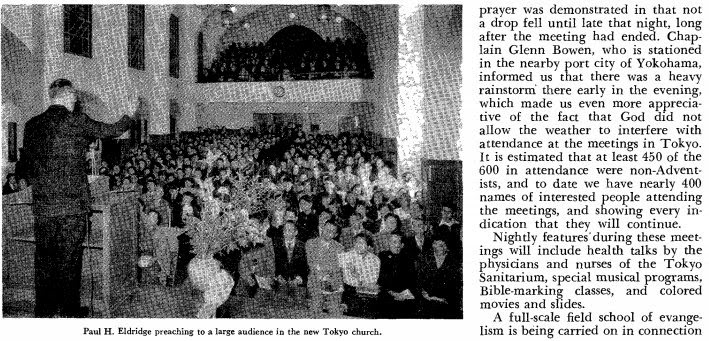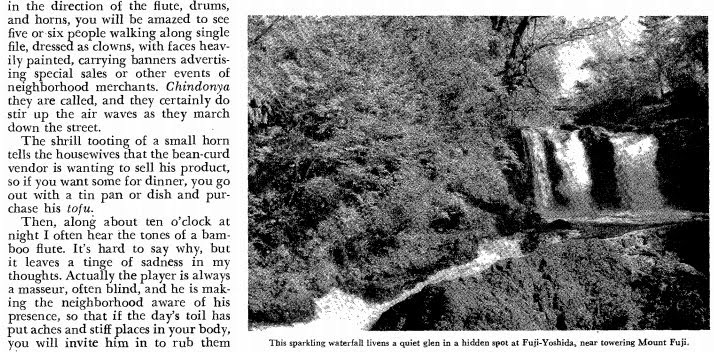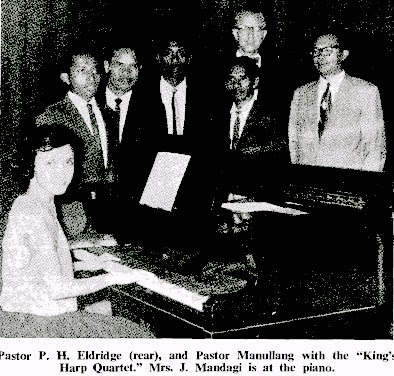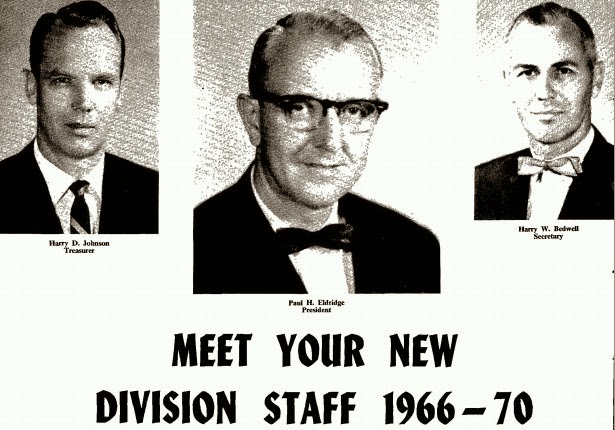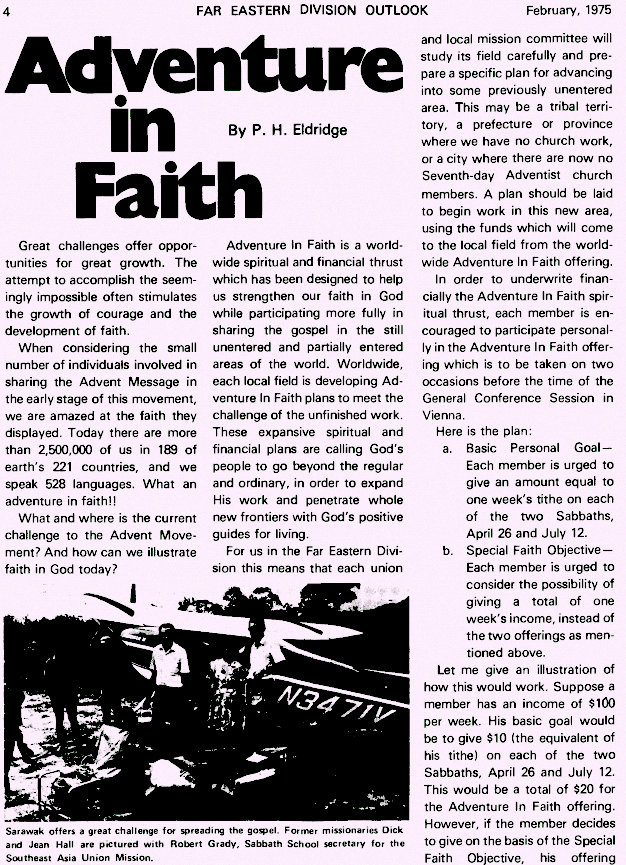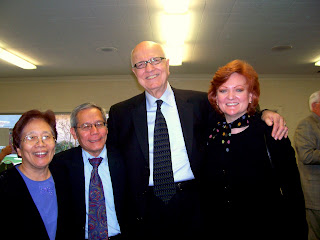The Journal of San Diego History
Summer 1976, Volume 22, Number 3
http://www.sandiegohistory.org/journal/76summer/migrants.htm
Adelaida M. Castillo received her M.A. degree in history from the University of San Diego in 1975. She has participated in several Filipino-Asian organizations including the Filipino-American Business and Professional Association. Ms. Castillo is presently employed as a Contract Compliance Investigator for the County of San Diego-Human Resources Agency. Her article presented here was an award-winning paper presented at the San Diego Historical Society's 1975 Institute of History.
INTRODUCTION
San Diego, 1929 --
I asked the driver if he can take me to a Catholic church. As soon as we got there, I told him to wait for me because I had a funny feeling I might not be welcome to this church. As I entered the door, a priest approached me and told me that the church was only for white people. That moment, I wanted to cry and die! From that day on, I've never entered a church.1
Thus spoke Emeterio Reyes, an elderly Filipino migrant, describing his first experience in San Diego. Emeterio belonged to a very religious family in the Philippines. And, he claimed, his decision to break away from the church was a drastic deviation from family tradition. The experiences of other migrants were as many and varied as their difficulties in adjusting to the new environment. For most of them, white chauvinism constituted an almost insurmountable handicap. The attitudes of the dominant culture affected their lives greatly. Those attitudes determined the sections of the city they did not occupy, buildings they did not enter, the people whose company they avoided, and the types of jobs to which they were limited.
Filipino isolation before the 1940s was best reflected in a San Diego Union news item about "the Filipino colony" in the city. The early migrants did not actually maintain an enclave as such, but for the larger community that neither had an interest nor understanding of Filipinos, the colony existed as a separate unknown entity. Many people in San Diego would admit not knowing the presence of a Filipino population even to this day. As someone remarked, speaking about the group, "I didn't even know they were here."
The first Filipino immigrants arrived in the early 1900s. Today, nearly three-quarters of a century later, there is no written information on the people prior to the midthirties, no trace in the city's history and no earlier census figures. A letter received from the United States Immigration and Naturalization Service explained the unavailability of statistics on Filipino immigrants:
Statistics showing the residences of aliens in the United States between the two World Wars are not available. Some information may be gleaned from statistics showing the number of immigrants admitted during the period in question. Statistics for Asia are broken down into China, Japan, India, Turkey and "Other Asia." The latter category which includes the Philippines, showed only 20,000 migrants between 1920 and 1940.2
For years, in San Diego, Filipinos have been lumped together with other Orientals in the "and others" category. Only in 1970, upon the request of concerned Filipino citizens, have they been included in the census separate from other Asians. The first individual count for Filipinos was 45,000. Some errors in census taking resulted from the fact that Filipinos mostly had Spanish surnames and were, therefore, designated as "people with Spanish surnames."3
In tracing the background of Filipinos in the city, the first problem encountered is the total absence of a compiled study on the people prior to the 1940s. This created a "blurred image" of a people who remained in historical obscurity for many years. As a local journalist wrote, Filipinos are "San Diego's silent minority who are just now beginning to make noise."4
HISTORICAL BACKGROUND
To understand the character of the Filipino migrants, it is necessary to know something of Philippine history and the culture of the people. The country is an archipelago consisting of over 7,000 islands and islets. It has a land surface of 114,830 square miles, described by some authors as "equivalent to the State of Arizona or almost twice the size of New England." Much of the country's land is fertile. The Philippines is rich in natural resources (virgin forests, mineral reserves, abundant sea products, and agricultural potentials), largely untapped. For example, two geographers observed:
The Philippines, as a part of the southeast Asian floral world supports one of the world's richest floral communities.... There are some 8,500 species of flowering plants, 1,000 species of ferns, and 800 species of orchids....5
Despite a wealth of natural resources, the Philippines remained poor. Successive exploitation by colonial powers (Spain, Japan, and the United States) have been blamed for the country's economic deficiency. And, like many developing countries, the Philippines never had enough capital for investment in production. The study of Filipino migration to San Diego reveals that one of the chief reasons for leaving the Philippines "was to earn as much money as possible." Many of the migrants experienced the scarcity of job opportunities in their homeland. The move to San Diego presented an alternative lifestyle to the more adventurous "pinoy" (colloquial for Filipino).
Most Philippine historians believe that the earliest known human types migrated to the country by way of land bridges connecting the Asian mainland. These human types called pygmies (sometimes termed negritoes or aetas), are also known as Filipino aborigines. Today, groups of pygmies are found scattered all over the Philippine archipelago. About 5,000 years ago, after the land bridge was submerged, people from South China, Borneo, Indo-China, and Malaya (now part of Malaysia), trekked to the archipelago by boats. Some of the Malay migrants took with them a system of alphabet or syllabary (see illustration). With the coming of the Spanish colonists, the syllabary became obsolete and was replaced by the Spanish alphabet.6
Spain's colonization of the Philippines began in 1521, when the Portuguese navigator, Ferdinand Magellan, sailing under the flag of Spain, landed on a small island of the south. A quick recognition of Spanish sovereignty is evidenced by the success of Magellan's group to convert the island chief and his people (about 800) to Roman Catholicism. Magellan was killed on a nearby island by a chief who refused to accept Spanish sovereignty over the archipelago. However, subsequent explorations in the islands enabled Spain to gain final control of the country by the late 1560s.7
Colonial mismanagement and abusive exercise of power by Spanish authorities in the Philippines inevitably led to a Filipino revolution in 1898. Even as early as the first decades of Spanish rule, observations on Philippine conditions were far from favorable:
According to King Phillip II himself, the population of the Philippines, had, by a decade after Legazpi's death, been reduced by more than one-third. In their haste to capitalize on the wealth and resources of the island... they turned a prosperous and happy country into a poorhouse....8
Throughout the years of colonial administration, the Spanish authorities were besieged by abortive Filipino revolts. Finally, in 1896, after Dr. Jose Rizal, a well-known and well-educated Filipino reformist, who is honored as a national hero, was executed for insurgency, a strong revolt group developed. The group, named Katipunan (literally, the Union), was led by Emilio Aguinaldo.
In May, 1898, Emilio Aguinaldo's land forces defeated the Spanish militia. At the same time, Commodore George Dewey waged a successful sea battle against the Spanish fleet in Manila Bay. Dewey was under orders from the United States to attack the Spanish fleet as a consequence of the Spanish-American war which began in Cuba.
Aguinaldo was oblivious of the American naval ships' presence in Manila Bay. By June 12, 1898, Aguinaldo established a dictatorial Filipino government. Aguinaldo's government not only remained unrecognized by the American authorities but was replaced by an American military administration in a year. Months after Aguinaldo's establishment of a dictatorial government, American and Spanish representatives began a negotiation to sign a treaty ending the Spanish-American war. The Treaty of Paris which ended the war between Spain and the United States was signed in December, 1898. Part of the Treaty provided for the cession of the Philippines for which Spain would receive $20,000,000.9
The Americans took over the Philippines as a legacy of war from Spain, in view of which President McKinley declared:
... there was nothing left [for Americans to do but] to educate the Filipinos and uplift and civilize and Christianize them [for they were people] for whom Christ also died.10
The American administration in the Islands undertook several projects and fields of endeavor. In a short time, progress had been attained "in peace and tranquility, general education, health and sanitation... railroads, streets, public utilities... civil service....11
English was adopted as a medium of instruction for all the schools. The American influence in education "fostered a creed of equality" among the Filipinos. It also explained "the way Filipinos fought with the United States in World War II, much to the amazement of the Japanese whose slogans of 'Asia for Asians' won little response."12 However, the efforts of American educators in the islands to expose Filipinos to American democratic ideals would later create much disillusionment for many of the Filipinos in the years of migration.
Recalling his experience in San Diego, a Filipino migrant remarked:
I found it hard to believe that when I came to San Diego, they [Americans] will not let me register in school because I'm not white ... It's too bad, I wanted to go back to school then ...13
Many of the migrating Filipinos expected a happy and prosperous life in the United States. They also expected to find a life of liberty and equality which their American teachers, with the zeal and dedication of Peace Corps workers, had taught.14
A report given by the Philippine Bureau of Labor in December, 1929 summed up the "most important causes of exodus of Filipino labor":
1. The unevenness of the distribution of population.
2. The unemployment in large urban centers, such as Manila and large cities.
3. Due to lack of opportunities farm laborers can only eke out a hand-to-mouth existence.
4. The waste of man-power due to forced idleness during off-season.
5. The small farmers and tenants barely earn enough to support and maintain their families from their share of their products.
6. The lack of incentives for agricultural workers in the Philippine Islands.
7. Letters to relatives at home relating the labor conditions in Hawaii such as high wages, good working conditions, abundance of work, and the thousands of pesos in money orders exchanged in the post offices of the Ilocos provinces serve as potent promoters of the present exodus.15
THE BEGINNING OF FILIPINO MIGRATION TO SAN DIEGO
Students—The Short Term Migrants
During the 1900s, conditions in the Philippines, according to many San Diego migrants were, "prosperous, peaceful and economically sufficient." However, the opportunity to travel to America enticed many adventurous young Filipino men.
In San Diego, the first recorded group of Filipino migrants were students enrolled at the State Normal School (now San Diego State University) in 1903. The School Registrar's records show the students were between the ages of 16 and 25, and were teachers in Philippine elementary and secondary schools. Subjects taken by the students included: algebra, drawing, botany, English, and music. Two of the students received grades of "two's" and "three's" which placed them in the average-to-good category. The rest of the group received no grades in their transcripts.16
It can be presumed the Filipino students attended the State Normal School as American government scholars. The scholars stayed in school for one year. After 1904, no more names of Filipino students were found in the registry except for two, one in 1923 and another in 1924, but both dropped out of their classes before the year's end.
Other Migrants
Between the late 1900s and 1946, various groups of Filipino immigrants came to San Diego. The young Filipino men who enlisted in the United States Navy Recruiting Offices in the Islands, have comprised a large bulk of the migrants ever since the 1900s.17 One example of a pioneer Filipino navy veteran was Felix Budhi, who came to San Diego in 1908 when he was only sixteen years old. His first memory of San Diego was:
Downtown, there were buildings like the Spreckels, Pickwick and Grant Hotels. Around Market Street, Fifteenth and Sixteenth, a small Filipino community is found.... A few of the Filipinos owned small restaurants combined with pool and gambling tables. Outside downtown there were only acres and acres of farms....18
Budhi felt "very lonely and homesick, just like the other guys." His purpose in joining the United States Navy was to earn as much money as possible and help his family in the Philippines. Others joined the navy for the same purpose, and some enlisted not only to make a living but to enjoy adventurous and exciting travel experiences.19
A number of the Filipino navy recruits thought life aboard ship caused much hardship and that the salary was meager—only $17.50 a month. Others believed that the salary was "good enough" with food and lodging free.20
There were Filipinos whose migration to the United States was precipitated by American entrepreneurs recruiting for cheap labor:
The influx of cheap Filipino labor to the United States, particularly to the Pacific Coast had increased considerably, in the 1920s. Before 1919, Filipino laborers went to the United States at the rate of 400 a year....21
The Filipino laborers were divided into two general groups, the farm workers and the non-farm workers. The non-farm workers found employment in hotels, restaurants, nightclubs, and apartment buildings as busboys, elevator boys, cooks, janitors, gardeners and messengers.
The farm workers suffered the most trying conditions of all the Filipino migrants. A Filipino Navy Veteran commented about the Filipino farm workers:
All you could hear was hardship from those guys. How much do you think they earned? Ten cents an hour in some farms.22
Many believed the farm workers suffered the worst economic fate among the Filipino migrant community. First of all, their employability was largely dependent on the employer's attitudes, in terms of: should he use Filipino labor in preference to Mexicans or Japanese, for instance? It was also dependent on types of crops or operations needed in the farms. The employment of Filipino labor in the harvest of certain crops (lettuce, carrots, asparagus, onions) or low-branched fruits (pears and grapes), was considered advantageous to the employer:
Their ability to work on wet ground and in wet weather is given as a reason for preferring Filipinos in the Delta Region of the San Joaquin Valley. Being small and agile, they are considered more handy and better able to bear the strain of long continued stoop work than most groups-except other Orientals, and these are not available in sufficient numbers ...23
David Guerico was one of the farm workers who experienced the "strain of long continued stoop work" on farms near Escondido. Guerico believed the reason for the Filipino farm workers' mistreatment by farm managers was because, "none of our people had guts to voice out their needs to the Government ... the few leaders chosen were irresponsible."24
FILIPINO SOCIAL LIFE IN SAN DIEGO
The most celebrated Filipino festivity in San Diego was Rizal Day, observed in honor of Dr. Jose Rizal, a Philippine national hero. Rizal Day celebration was a yearly occurrence for Filipinos in the city, the earliest on record being held in 1919. Usually, a small news item in the San Diego Union was written on the event:
More than 300 Filipinos, among them doctors, lawyers, musicians, and engineers, with their friends in San Diego, last night at Hotel San Diego honored the memory of Dr. Jose Rizal, national hero of the Commonwealth.25
There were other Filipino associations such as the Rizal Day Club, Filipino Athletic Club, and a few short-lived associations in the 1920s. The Filipino Athletic Club was organized and headed by Vicente Elequin. Elequin mentioned that by 1928 the club membership rose to over 100. The members held picnics and basketball games between Air Force and Navy teams every summer. The club also co-sponsored the Rizal Day celebration with the Rizal Day Club and other associations which developed later in the decade.
FILIPINO MIGRANT PROBLEMS IN SAN DIEGO
By the time Filipinos began to trickle into San Diego, California's feeling of hostility against the Chinese and Japanese had already been shown. With Filipino migration, the state's anti-Oriental sentiment seemed to have mounted to a point where, in the 1930s, Filipino exclusion was endorsed by supporters of the exclusion movement. In San Diego, Filipinos experienced several trying incidents which they believed were related to the anti-Philippine attitude. Of all the predicaments they suffered, the early settlers considered one misconception not only insulting but ridiculous. A Filipino officer in the navy talked about it:
I cannot imagine how a rumor like that started or why anyone would believe it. But they [Americans in the service], really thought we had tails.26
Stories about Filipinos being part-monkey were substantiated by tales from the older migrants which explained why some of the migrants had been labeled "monkeys" as they walked in the streets of San Diego. The other migrants were very perplexed about the fact that they were referred to as "monkeys." The label became so popular among the servicemen that to this day, Filipinos in the American military jokingly call each other unggoy (Filipino terminology for monkey).
In 1930, Richard Welch, a San Francisco Congressman, sponsored legislation known as the Filipino Exclusion Bill. The bill sought to limit Filipino immigration into Hawaii and the Continental United States.
Congressman Welch discussed the need for Filipino exclusion:
Practically all of them are males between the ages of 17 and 25. Less than four percent are females. These Filipinos do not come as colonists. They seek transient labor and their wages are far below those on which an American, particularly a white man with a family, can live. At the present, unemployment is a very serious problem on the Pacific Coast as well as in other parts of the country.
Many employers of labor have turned thumbs down on the white applicant who is over 40 years old and, as I have said before, the Filipino immigrant is under 25. His physique is adaptable to light industry, the only occupation which remains for our great surplus of white workingmen who have passed the age of 40.27
Camilo Osias, a noted Filipino political leader of the thirties, was present during the Congressional Hearing of the Filipino Exclusion Bill (H.R. 8708). Osias, in response to Welch's allegations, declared that the remedy for the California situation, and the labor problem between the United States and the Philippines did not consist of exclusion. Osias believed:
The remedy lies in immediately granting full and complete independence to the Philippines. [Applause]. This will be the remedy for the social question; it will be the remedy for the racial question; it will be the remedy for our political situation. It will be the remedy for the existing cultural anomaly which, non-eligible to American citizenship and not being free and independent, prevents us from framing a proper educational philosophy that would guide us in our cultural orientation.... If we are treated as a foreign people for purpose of immigration, we must first be given the category of a free and independent nation. [Applause].28
Even Richard Welch himself was in favor of independence for the Filipinos. When asked by Morton Hull, a Texas representative, if Welch would agree to independence, Welch answered, that he would "welcome it and vote for it," if necessary.
The exclusion movement was the ultimate expression of the anti-Filipino sentiment that reached its peak in the 1930s. On the national scene, the American Federation of Labor was among the pressure groups in favor of exclusion.29
ANTI-MISCEGENATION
Filipinos in California had another problem to face—miscegenation. The problem of miscegenation was traced to the California statutes of the mid-1880s, Section 60 of which provided: "All marriages of white persons with negroes, mongolians, or mulattoes are illegal and void."30 Classified as Mongolians, Filipinos were governed by the said provision. However, some migrants managed to circumvent the anti-miscegenation laws due to statutory recognition of out-of-state laws.31
One of the emigrants in San Diego petitioned for a marriage license in Los Angeles but he was refused. He failed to secure one in San Diego likewise. Finally, he took his bride to Guadalajara for a civil wedding. The man spoke of his wedding:
"We were married in Guadalajara, in a civil ceremony. After that, we had a church wedding here in San Diego."32
CONCLUSION
As a result of anti-miscegenation laws and the lack of Filipino women, a large majority of the 1920s and 1930s migrants have remained unmarried. A few of the men either left their wives in the Philippines or were married and divorced in this country. As a result, many of the Filipino Senior Citizens' members to date are single. They live in downtown hotels and spend their leisure hours in a Filipino Senior Citizens' recreation building downtown. The building includes a barbershop, a small pool room, and a front office. Within these quarters, the elderly go through the day chatting, playing pool, or getting a haircut. Before the senior citizens' association was formed, it was a common occurrence for an old migrant to be found dead in a hotel room with no relatives to give him a decent burial. In the winter of 1973, a Filipino migrant died leaving $10,000 under his mattress and no written will. Consequently his money was expropriated by the government. With a Senior Citizens' office now in operation, a majority of the elderly migrants are cared for by others in the community. One of them expressed his feeling: "I am no longer afraid to die because I know there are people who care."
The difficulty of adjustment in the new environment can be attributed to the youth of the migrants. Many of them were in their early teens when they joined the navy or became farm workers. Very few had an opportunity to continue their schooling, even fewer were those who graduated from high school or college before 1946.
As a result of the exclusion movement, in 1935 Congress passed an Act providing for repatriation of Filipinos, free of charge. The San Diego Union announced, "native Filipinos will be sent back to Manila at the expense of the U.S. government."33
According to the interview subjects, "only a few Filipinos in San Diego returned to the Philippines."
This study has excluded the post 1946 migrants. Because of many considerations, they require a whole new scope of research. The post 1946 immigrants arrived after the Philippines gained independence from the United States. Unlike the pre-1946 group, they did not enter the country as "American nationals," but instead were subject to immigration laws that applied to aliens. Also, the post-1946 immigrants were composed of more women than the pre-1946 group. With new legislation in the United States concerning better treatment of minority peoples, the post-1946 migrants began to enjoy a better status than their predecessors.
NOTES
1. Emeterio Reyes, San Diego. Personal Interview, July 27, 1973. All interviewees answered a questionnaire prepared by the author.
2. Letter from E. A. Loguhran, Commissioner, U.S. Department of Immigration and Naturalization Service, Washington, D.C., to Adelaida Castillo, April 18, 1973.
3. County of San Diego 1970 Census Tract, prepared by the Planning Department of San Diego County.
4. Barbara Herrera, "San Diego's Silent Minority," San Diego Evening Tribune, August 18, 1971, p. B-1.
5. Frederick Wernstedt and Joseph Spencer, The Philippine Island World (Berkeley and Los Angeles: University of California Press, 1967), p. 105. See also Teodoro Agoncillo and Milagros Guerrero, History of the Filipino People (Quezon City: R. P. Garcia Publishing Co., 1972), p. 1.
6. Agoncillo and Guerrero, Filipino People, pp. 23-24.
7. Ibid., p. 77.
8. Miguel Lopez de Legazpi led an expedition from Mexico and succeeded in establishing a permanent Spanish settlement in Cebu, Southern Philippines in 1565. Condrado Benitez statement in George Farwell, Mask of Asia: The Philippines Today (New York: Frederick Praeger Publishers, 1967), p. 36.
9. Aguinaldo and Guerrero, Filipino People, pp. 259, 262.
10. Garel Grunder and William Livezey, The Philippines and the United States (Norman: University of Oklahoma Press, 1951), p. 68.
11. Ibid.
12. Farwell, Mask of Asia, p. 58.
13. Tony Alcalde, 1919 Filipino Migrant, San Diego. Personal interview, June 20, 1973.
14. Farwell, Mask of Asia, p. 58.
15. Philippine Bureau of Labor Mimeographed Report, December, 1929, in Lasker, Filipino Immigration to Continental United States and to Hawaii, pp. 233-234.
16. Registrar's Office, San Diego State University, Survey by author, March, 1974.
17. President Woodrow Wilson approved a Congressional Act by which Filipino nationals became eligible for draft into the "service of the United States, the Militia and for Other purposes."
18. Felix Budhi, U.S. Navy Veteran, Bandleader, "San Diego Rhythm Makers Band," San Diego. Personal interview, February 21, 1974.
19. Artemio Esguierra, 1919 Migrant, U.S. Navy Veteran, San Diego. Personal interview, June 28, 1973.
20. Vicente Elequin, U.S. Navy Veteran, noted Filipino-American Community leader, San Diego. Personal interview, February 25, 1973.
21. Agoncillo and Guerrero, Filipino People, p. 387.
22. George Cacho, U.S. Navy Veteran, San Diego. Personal interview, February 13, 1974.
23. Bruno Lasker, Filipino Immigration to Continental United States and to Hawaii (Chicago: University of Chicago Press, 1931), p. 69.
24. David Guerico, Member, Filipino-American Senior Citizens, San Diego. Personal interview, June 18, 1973.
25. San Diego Union, March 8, 1936, p. 10. Little information is found on Filipino professionals due to stringent California laws which made it difficult for non-citizens who were lawyers, doctors, and engineers to secure licenses to practice. The professionals left San Diego within a short time of arrival. Those who remained had to work in menial jobs such as dishwashing, gardening, etc.
26. Chief Victor Hernandez, Personnel Officer, NAS Miramar, San Diego. Personal interview, September 6, 1974.
27. Congressional Record, Second Session, 71st Cong., Vol. LXXII, Part 6 (Washington: U.S. Government Printing Office, 1930), p. 6107.
28. Congressional Record, Second Session, 71st Cong., Vol. LXXII, Part 6 (Washington: U.S. Government Printing Office, 1930), p. 6110.
29. Agoncillo and Guerrero, Filipino People, p. 388.
30. Statutes of California, 48th Session, 1929 (Sacramento: California State Printing Office, 1930), p. 335.
31. California statutes contained validity for out-of-state marriages under which migrants found protection. Annotations to the Civil Code of California, Section 4104 (San Francisco: Bancroft-Whitney Co., 1972), p. 141.
32. Vicente Elequin, U.S. Navy Veteran, San Diego. Personal interview, June 28, 1973.
33. San Diego Union, March 8, 1936, p. 10.
34. On July 4, 1946, the United States granted independence to the Philippines.
